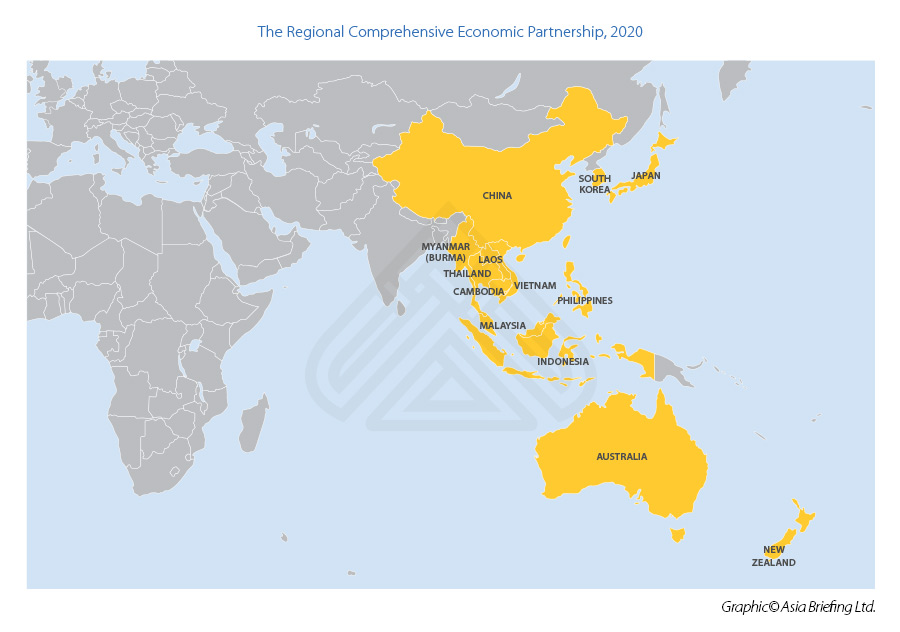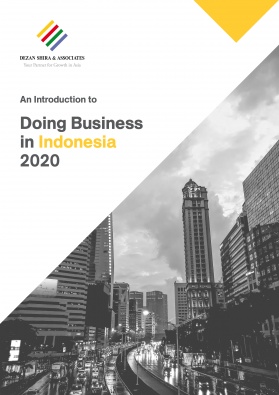New RCEP Free Trade Agreement Rules of Origin to Boost Finishing of Products Investment into Cambodia, Laos & Myanmar
Op/Ed by Chris Devonshire-Ellis
The Regional Comprehensive Economic Partnership (RCEP) free trade agreement, signed off on November 15, will provide a boost for foreign investment into ASEAN’s lower wage and lesser skilled countries.
While the RCEP agreement has all the usual elements included in a free trade deal, tariff reductions or elimination, standardized customs procedures, services, and investment, and so on, it also consolidates Rules of Origin definitions and quotas for the first time amongst participating nations. Just one Rule of Origin document is now sufficient to cover all countries in RCEP.The RCEP deal includes all ten ASEAN countries, along with Australia, China, Japan, New Zealand, and South Korea. While the latter five nations are mainly technically advanced nations and have adopted high-end factories, labor and production costs are relatively high.
This means that for processes that need careful labor-intensive involvement, such as finishing garments, the unified rules of origin regulations under RCEP will motivate an increase of manufacturing investment as concerns finishing of products, such as garments. This will see investment interest increase in countries with lower-cost and lesser-skilled workers such as Cambodia, Laos, and Myanmar, and will be of special interest to manufacturers from Australia, Japan, New Zealand, Singapore, and South Korea where production costs are higher.
According to estimates by International economics professors at Johns Hopkins University, RCEP will add US$186 billion to the size of the global economy and 0.2 percent to the gross domestic product of its members. The benefit of cheaper goods will spread throughout ASEAN and the RCEP members as well as filter through to consumers in Europe and the United States.
There is still much work to be done though, and the RCEP deal isn’t yet fully ‘comprehensive’. Agriculture is largely omitted — all nations within RCEP wishing to protect their respective markets, and RCEP does relatively little to set common standards for products. Environmental issues and human rights — including labor — are also unaddressed.
RCEP has additionally been unable at this stage to agree on e-commerce regulations, with members unable to agree on any rules on cross-border data flows or a customs moratorium on data transmission. That area will be a major source of interest in future discussions.
Although further tariff reductions were not on the immediate agenda, RCEP nations have agreed to mutually recognize each other’s professional qualifications, potentially opening doors for RCEP market opportunities for lawyers, dentists, doctors, and other professions. RCEP should also help reduce manufacturing costs and make life easier for companies by letting them export products anywhere within the bloc without meeting separate requirements for each country.
In the meantime, manufacturers in the more advanced countries in the RCEP bloc should be looking at how to minimize costs by outsourcing finishing work to the less well-off ASEAN nations.
Related Reading
- Cambodia Extends Incentives to Support Private Sector and Economy
- Import and Export Procedures in Laos – Best Practices
- Threading the Needle: the Rise of Myanmar as a Garment Manufacturing Alternative
About Us
ASEAN Briefing is produced by Dezan Shira & Associates. The firm assists foreign investors throughout Asia and maintains offices throughout ASEAN, including in Singapore, Hanoi, Ho Chi Minh City and Jakarta. Please contact us at asia@dezshira.com or visit our website at www.dezshira.com.
- Previous Article Planning Your 2021 Investment Budgets: Opportunities in ASEAN
- Next Article The Asia Briefing Weekly Round Up








